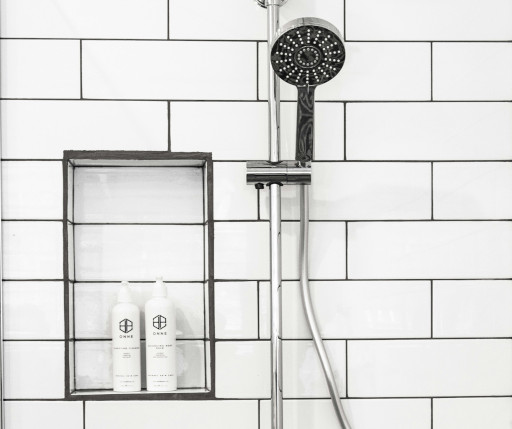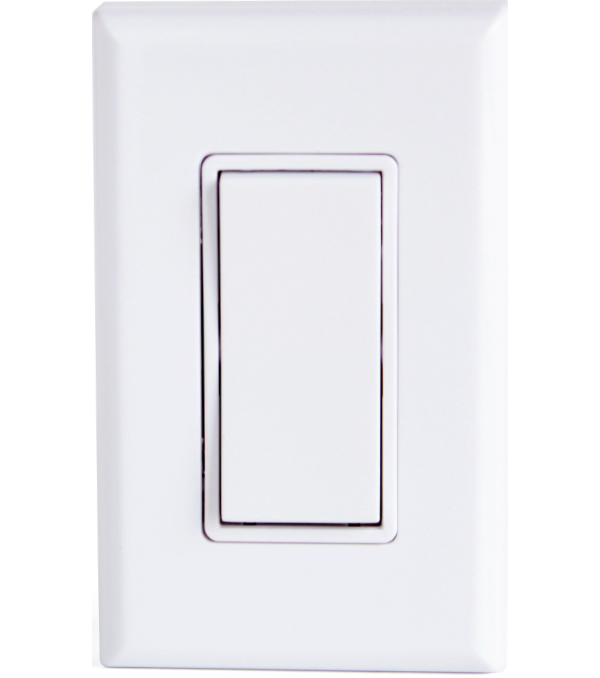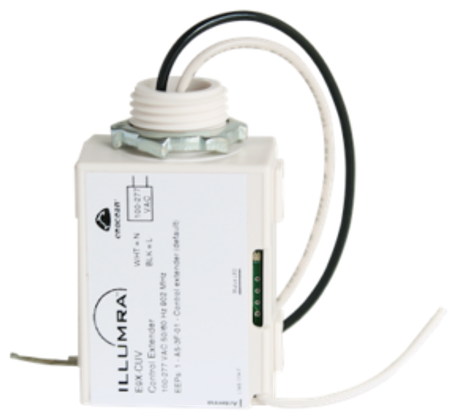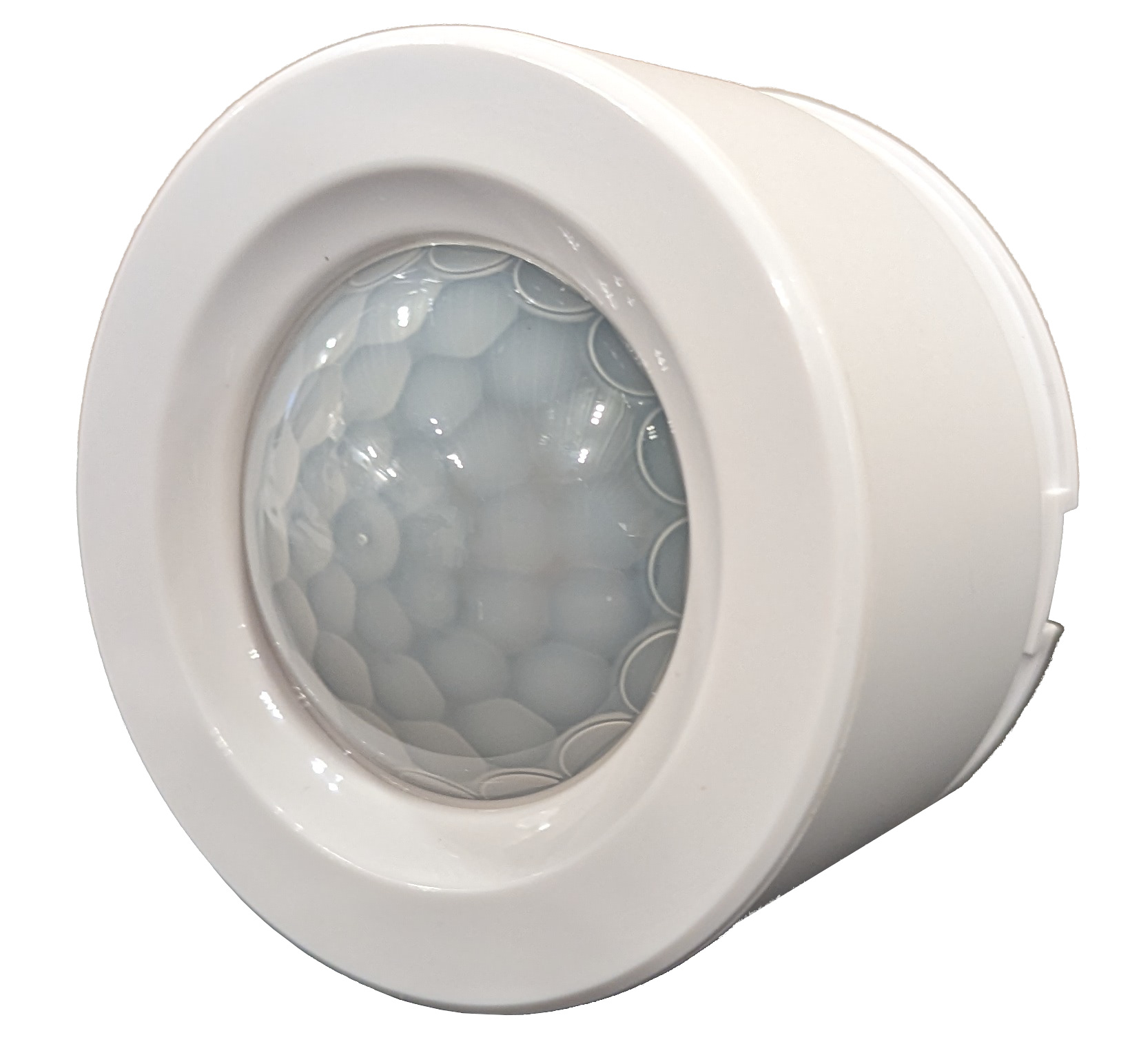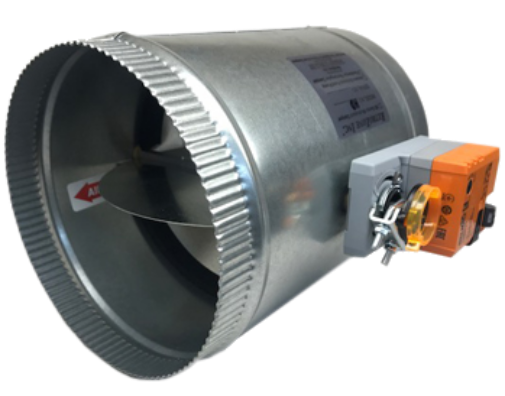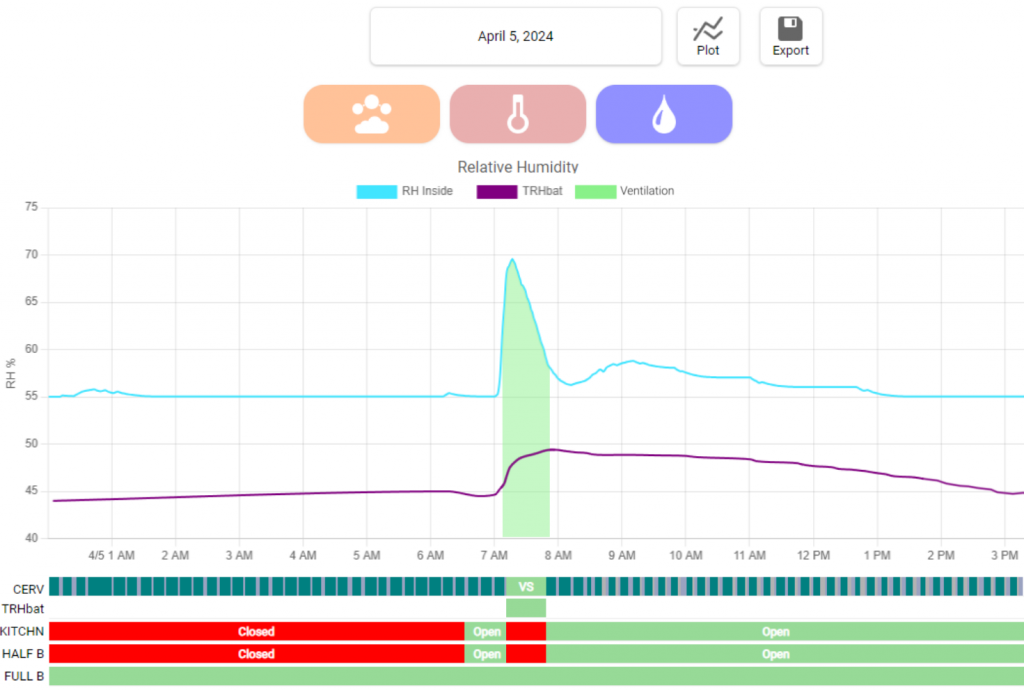Proper ventilation in bathrooms is essential to prevent the growth of mold and mildew, which can compromise both the integrity of the building and the health of its occupants. Additionally, minimizing bathroom odors is absolutely necessary.
Bathrooms and kitchens are relatively small spaces that generate high levels of pollutants. While short bursts of ventilation are necessary, effectively drying a bathroom requires more than simply running an exhaust fan for a brief period. Following a shower, a significant amount of moisture needs to be eliminated from surfaces and towels. Research indicates that nearly a pint of water per person, per day needs to be evaporated from a bathroom’s shower stall surfaces, towels and washcloths (see Table 1, page 13 of our Handling Humidity report #1). Unlike the steam from a hot shower, the water absorbed by towels and bathroom surfaces takes time to vaporize.
Triggering Ventilation Events
A variety of sensors and switches can trigger bathroom ventilation events within the CERV2 system. These include wall switches, occupancy sensors, active circuit transmitters, and temperature/humidity sensors. These passive sensors eliminate the reliance on building occupants to manually activate exhaust fans as studies have consistently shown that occupants frequently fail to activate exhaust ventilation.
Temperature/humidity sensors continuously monitor bathroom air quality to determine if a ventilation cycle is necessary. These sensors can detect moisture spikes from showers, prompting the CERV2 system to initiate ventilation.
Triggered Exhaust Mode with Increased Fan Speed
The CERV2 system offers a maximum airflow of 300cfm at 100% fan speed. During standard operation, the fan speed typically ranges from 50% to 70%, resulting in an airflow of 150 to 200cfm. With no ventilation triggered, the system maintains an airflow of 30cfm for the bathrooms and laundry room, and 60cfm for the kitchen, resulting in a total airflow of 180cfm. Activating a ventilation event increases the CERV2 airflow to 300cfm, with corresponding increases in airflow for the bathrooms and laundry room (to 50cfm each), and the kitchen (to 100cfm) (Figure 7). This approach aligns with ASHRAE 62.2-2019 local exhaust requirements.
Triggered Exhaust Mode with Zone Dampers
Zone dampers provide a targeted approach to bathroom ventilation, concentrating airflow where it is most needed without requiring an overall increase in fan speed. The CERV2 system facilitates a user-friendly zone damper setup, with zone dampers available in 4″, 6″, and 8″ sizes.
Zone dampers react to a local exhaust event triggered by occupancy detection in the powder room. Dampers in all unoccupied zones partially close (to roughly 20-30% of their full open flow), while the damper serving the occupied powder room remains fully open. If another bathroom becomes occupied, its corresponding damper will also open (for instance, Kitchen ventilation activation triggers the kitchen damper to open entirely along with the Powder Room).
This approach offers a significant advantage over simply increasing the fan speed. By strategically adjusting zone dampers, the CERV2 system can deliver enhanced exhaust ventilation in targeted areas without requiring an overall increase in airflow throughout the residence. Zone damper implementation might appear complex, but the CERV2 system’s “plug-and-play” functionality simplifies Ventilation Trigger and Zone Damper configuration.
The above image shows a real-word example of a remote Temperature & Relative Humidity (Purple – TRHBat) sensor triggering the CERV to ventilate when it detects a spike in humidity, indicating a shower event. The blue line (RH Inside) shows the relative humidity measured by the CERV itself. As the RH sensor is triggered to ventilate, the system closes down the Kitchen (KITCHN) and Half Bath (HALF B) zone dampers to favor removing air from the bathroom with the sensor (FULL B).
Related Articles
newspaperFeatured Article - Efficient, Smart Bathroom Ventilation with the CERV2
design_servicesDesign Resource - Handling Humidity: Understanding and Modeling Humidity





